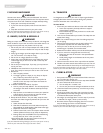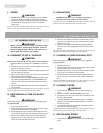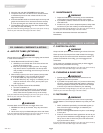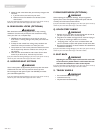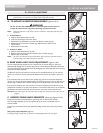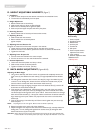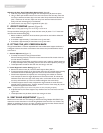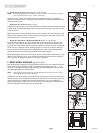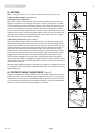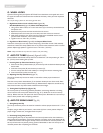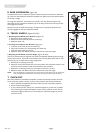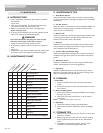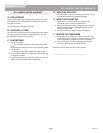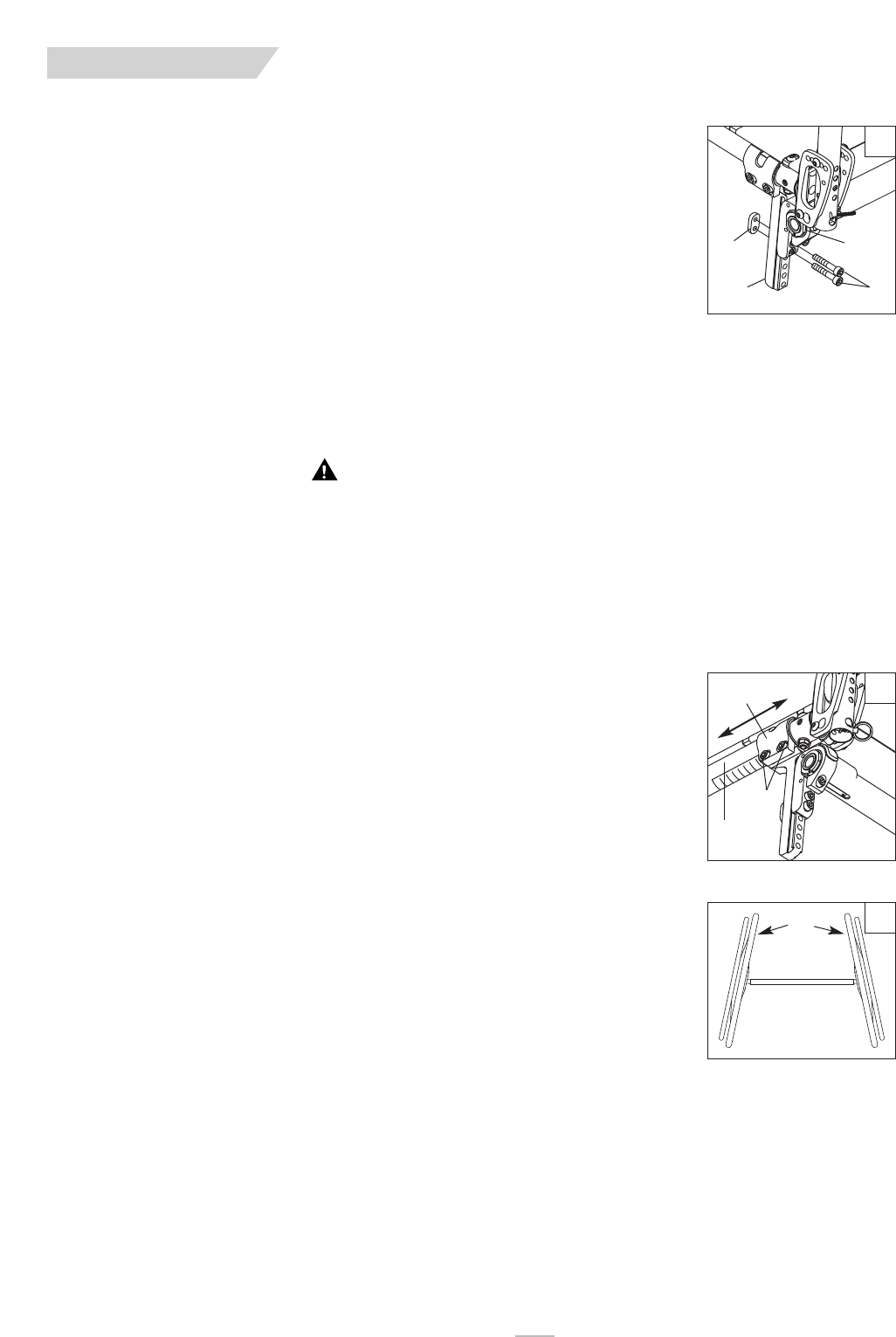
102841 Rev. A
16
ENGLISH
IX.
I. ADJUSTING REAR SEAT HEIGHT (Figure 14)
T
o adjust rear seat height, loosen and remove the 4 cap screws (A) (2 per side) and nut plate (B)
that secure the camber tube clamps (C) to the axle plates (D). Move both camber tube clamps
(C) to the desired height and reinstall the 4 cap screws. Prior to tightening, follow the instruc-
tions for setting the toe-in/out to zero (Section K-3). Tighten screws to 144 in-lbs. (16.3 Nm).
NOTE– A
djustment to rear seat height may also require caster angle adjustment. See Section M.
J. CUSHION (Optional) INSTALLATION
Place cushion on seat sling with VELCRO® side down. The beveled edge of the cushion
should be in front. Press firmly into place.
K. REAR AXLE
The most important adjustment on your Quickie wheelchair is the position of the rear axle.
The center of gravity and wheel camber are determined by the axle adjustment.
1. Center of Gravity Adjustment (Figure 15)
WARNING
The more you move your rear wheels forward, the more likely your chair will tip
over backwards. Always make adjustments in small increments, and check the
stability of your chair with a spotter to prevent a tip-over. We recommend that
you use anti-tip tubes until you adapt to the change and are sure you are not at
risk to tip over. Refer to additional Warnings in Section VI “Falls and Tip Over”.
NOTE– Changes to the center of gravity may affect the rear seat height (Section I), toe-in/toe-out of the rear
wheels (Section K-3) and the squareness of the casters (Section M). If you change your center of gravity
position, re-adjust all of these settings if necessary.
NOTE– Adjusting your chair’s center of gravity will require re-adjusting the location of the wheel locks
(if provided). See Section O for instructions on adjusting the wheel locks.
You can adjust your center of gravity position by moving the two axle plate clamps (E) for-
ward or rearward on the seat tube (F). Moving the axle plate clamps forward shortens the
wheelbase and lightens the front end, making your chair more maneuverable. Moving the
axle plates rearward makes the chair more stable and less likely to tip over rearward.
To adjust the center of gravity location, remove both rear wheels. Loosen the 4 screws (G) (2
per side) that secure the axle plates (E) to the seat tubes. Slide both axle clamps forward or
rearward along the seat tube to the desired position. Make sure both sides are adjusted sym-
metrically before tightening screws. Tighten screws to 144 in-lbs. (16.3 Nm).
Once the axle plate clamps are secured, attach the rear wheels, occupy the chair and maneu-
ver it with a spotter to get a feel for the new adjustment.
2. Wheel Camber (Figure 16)
Wheel camber, shown as angular relationship (H), provides greater side-to-side stability due
to the increased width and angle of the wheelbase. It also allows for quicker turning and
greater access to the top of the handrims.
Wheel camber is determined by pairs of interchangeable camber plugs which are available
from your authorized supplier in 0º, 3
°, 6º and 9º angles.
H
16
E
G
F
15
A
C
B
D
14



